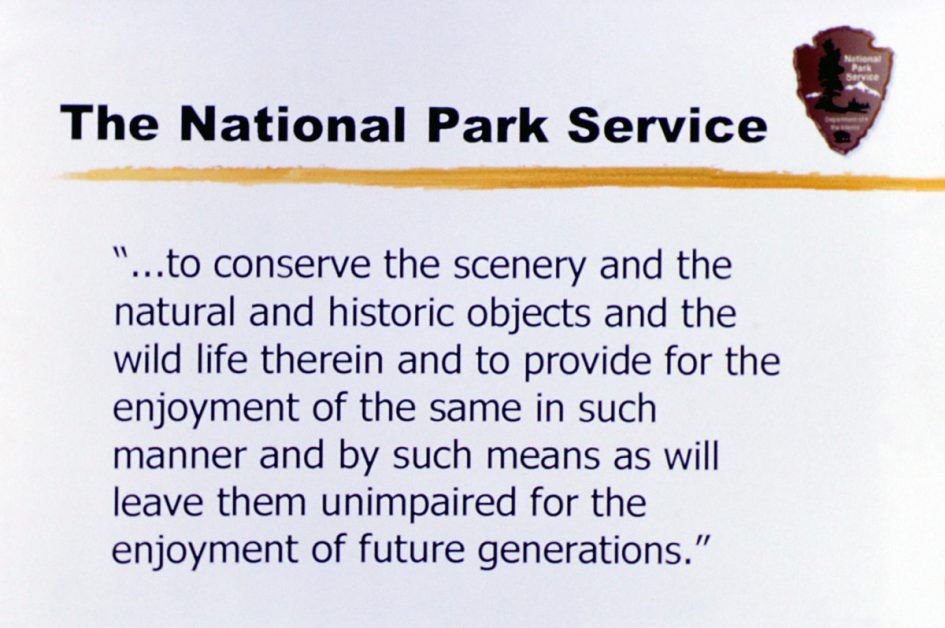In the United States, we consider our National Parks a treasure. Pieces of land set aside to be conserved for sublime feelings of awe and gratitude. This wasn’t always the case. To those who enjoyed the pleasures of modern capitalism in the early 1900’s, especially oil, gas, and politicians which need those industries to fund their re-elections, the formation of the National Park’s was a slap in the face. What good is the land unless we exploited to its full utility? There was a tremendous fight for the conservationist including the then President Theodore Roosevelt.
The Organic Act of 1916 established a government entity for the management of specific plots of land set aside for conservation. “Be it enacted by the Senate and House of Representatives of the United States of America in Congress assembled, That there is hereby created in the Department of the Interior a service to be called the National Park Service, which shall be under the charge of a director, who shall be appointed by the Secretary and who shall receive a salary of $4,500 per annum” (Organic Act 1916). To many, even today, it was heroic achievement on the behalf of “wild” conservation. But wilderness is a lie. It assumes that no human inhabits a piece of land, not in the past or now. It is a false narrative.
Yellowstone National Park was established in 1876; it was the national park before national parks existed. Yellowstone was first under the thumb of the US Army. A year after the Organic Act, Yellowstone was placed under the care of the very new National Park System. Yellowstone would become a model for the National Park Service; this model would include eradication of Native Americans, the creating of a specific ‘wilderness, and establishing regulations for what the land could be used for. The removal of the Native American population was essential in perpetuating the lie of ‘wilderness’. As Mark David Spence tells us in his book Dispossessing the Wilderness: Indian Removal and the Making of the National Parks, Yellowstone was the “first example of removing a native population in order to ‘preserve’ nature,” and that this ideal of pure nature became the model for other national parks, both within the United States and abroad (Spence 70).
This is where I will start my inquiry into land use policy. I will not argue that the National Park system is inherently wrong, although in many cases it is, some ideas that the N.P.S inspires are good; protection of species, protection of land, conserving water resources, and so forth. But the idea of wilderness is a crippling narrative that seeks to eliminate the true story of land grabbing and assimilation of Native Americans. The idea of wilderness is also a capitalist dream, especially in an era when we no longer pay for objects but for experiences. There is 646-Billion-dollar industry that depends on the ‘wilderness’ and our participation in it.

Leave a Reply